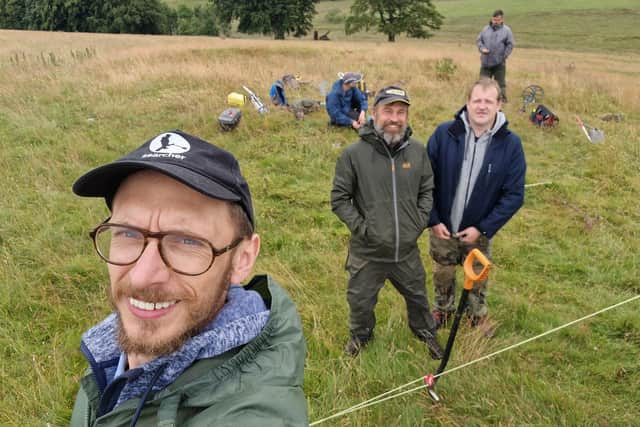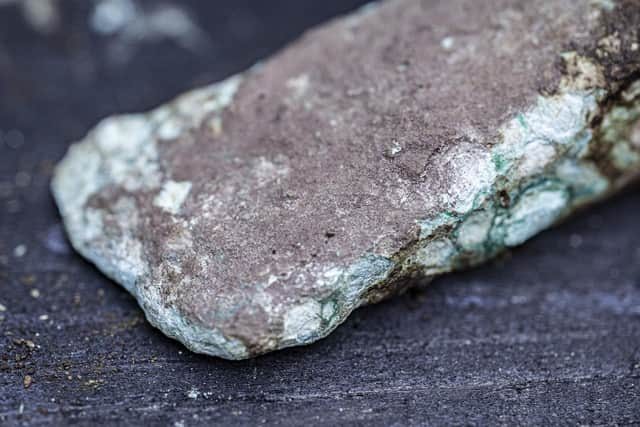Metal detectorist makes second major discovery after Bronze Age hoard found in Borders
Mariusz Stepien is credited with uncovering the Blyth Hoard, featuring two axe heads and a bronze ingot weighing 2.8kg, which was deposited in a previously unknown cairn.
The find comes after Mr Stepien, from Loanhead, who runs a house renovation business, discovered the Peebles Hoard containing a rare Bronze Age horse harness with rattle and complete sword in July 2020.
Advertisement
Hide AdAdvertisement
Hide AdMr Stepien said: "I am personally honoured that after my experience of the Peebles Hoard, I was once again entrusted with this new site, to research and to experience the total excavation. Also indescribable is the joy of being the discoverer of another hoard, already conventionally named the Blyth Hoard.”
Mr Stepien was detecting with Dariusz Gucwa, who was there when the Peebles Hoard was found, and friend Damian Michalowsk when the latest treasures were discovered.
He located the artefacts, which likely date to 1100-800 BC, after spotting a possible outline of a round building on the ground. A strong and steady signal started to emit from his metal detector, and he started digging and then removing stones one by one.
He told Searcher metal detecting magazine: "The situation was very similar to that of the Peebles Hoard, which made me even more excited. With each passing moment, the tension increased and the signal continued to sound intense and stable.
"After several minutes, I noticed a green patina on something. My heart began to beat even faster and I started using a brush to take extra care with the object.


“Gently removing the soil, I took out the socketed axe head – my first ever. There was no end to the joy."
With all three now at the find spot, a second object was then discovered and the decision was taken to stop searching. "Again the imagination reached zenith, but it was necessary to think and secure the location as soon as possible,” Mr Stepien said.
The Treasure Trove Unit, which assesses and catalogues newly found antiquities on behalf of the Crown, was contacted and an excavation organised with prehistory experts from the National Museum of Scotland.
Advertisement
Hide AdAdvertisement
Hide Ad"Once there, the archaeologists announced that we were dealing with a previously unrecorded cairn of an unknown date, Mr Stepien said.


More finds were made as the excavation got underway. The detectorist added: “The first identified object was an ingot, weighing 2.8kg, the first of its kind in Scotland.”
Close to the ingot, decorative clay moulds and a second socketed axe head, which was embedded in clay and may never have been used, were found. It is believed the site may have been used for smelting or casting, with analysis of the finds and location continuing.
Mr Gucwa, a supermarket worker, of Edinburgh, said: “Every Sunday we go out to discover new Scottish history. We love spending time out in the fields, not only for fresh air and to relax, but also because we are passionate about history.
"We feel absolutely great to again be part of a find that adds another piece of Scottish and British history and it is our privilege to have walked on that field and see that treasure excavated.”
Comments
Want to join the conversation? Please or to comment on this article.